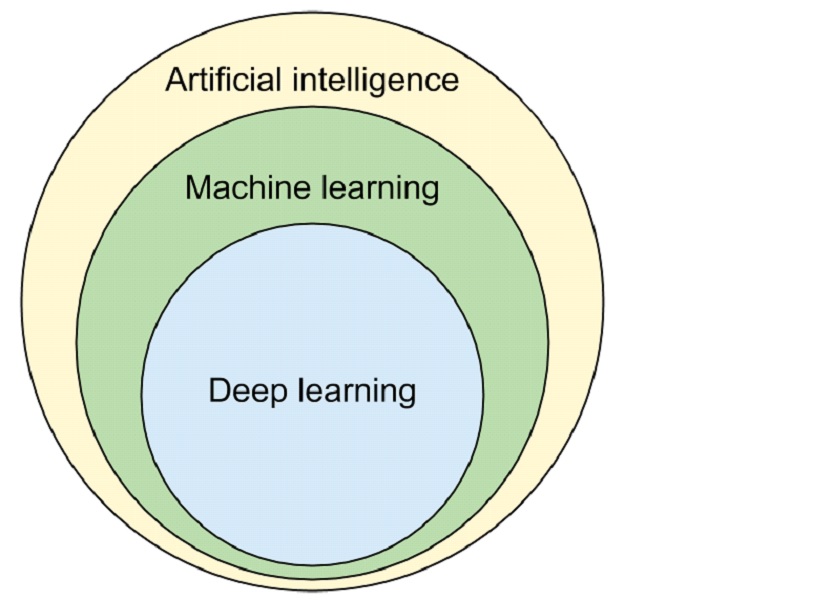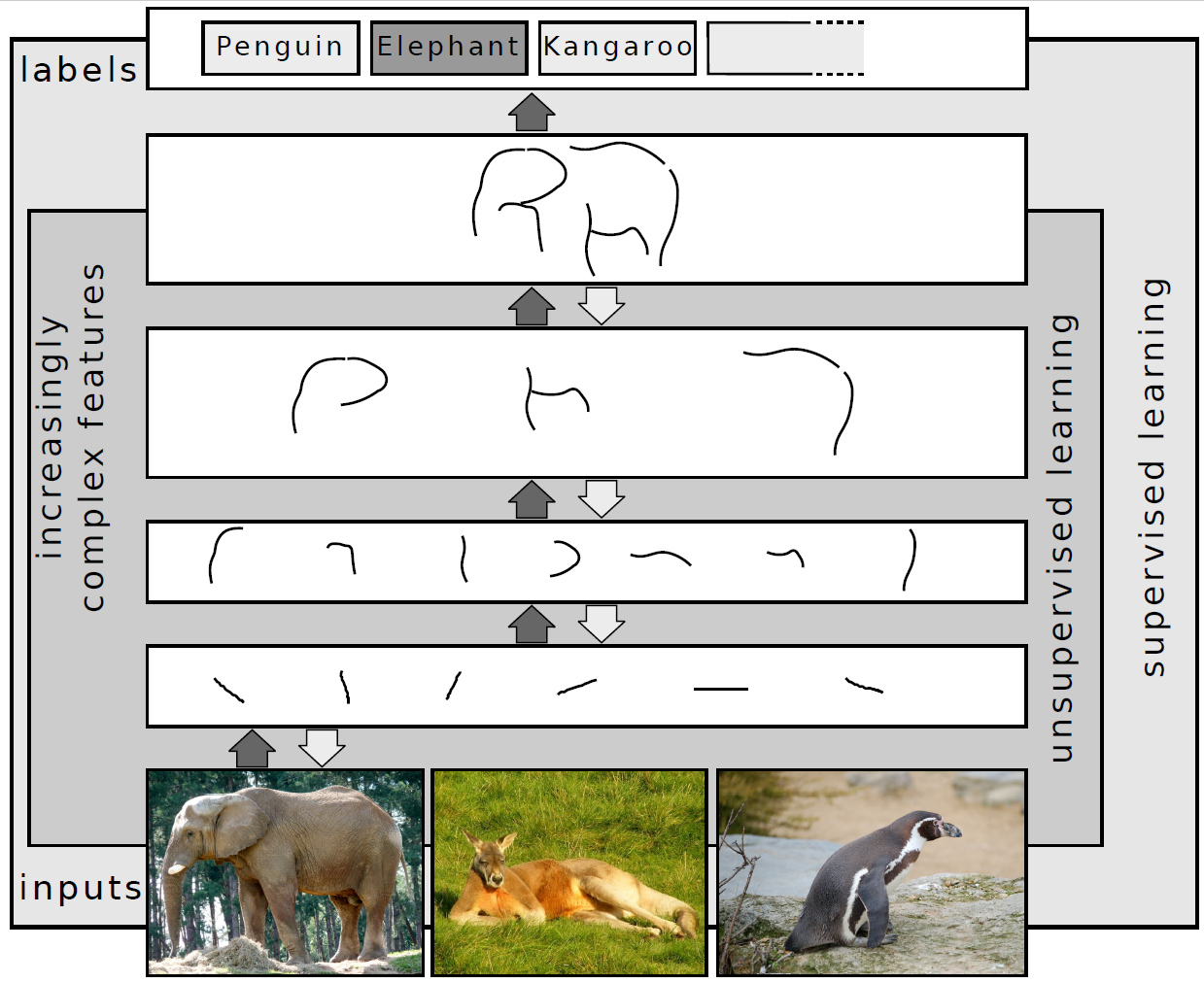Two core parts of artificial intelligence are machine learning and deep learning. But what are they and how do they relate to one another?
Beyond the current generative AI buzz, what exactly is machine learning vs deep learning? And how do the two apply to data analytics? While context determines the impact these fields have on a data analyst’s work, they have many applications in areas such as predictive analytics and data mining. But most importantly, they are thrilling fields in their own right.
In this article, I’ll introduce the concepts of machine learning and deep learning, exploring how they differ and how they’re used.
To discover how a career in data analytics could be your first step into artificial intelligence, try CareerFoundry’s free 5-day data analytics course.
When you’ve finished reading, you’ll be able to answer:
- How machine learning vs deep learning relate
- What is machine learning?
- What is deep learning?
- In summary: machine learning vs. deep learning
Before we get down to the details, let’s contextualize these topics. For that, we need some all-important background. Enter: artificial intelligence.
1. How machine learning vs deep learning relate
The real question isn’t what is the difference between machine learning vs deep learning, but how do they relate to one another.The best way to consider this is by starting to consider how they fit into artificial intelligence.
AI is a broad area of scientific study, which concerns itself with creating machines that can “think”. There are many types of artificial intelligence, depending on your definition.
Machine learning is a subset of AI, and in turn, deep learning is a subset of machine learning.
The relationship between the three becomes more nuanced depending on the context. But for this article, the following is a useful way to picture them:

Source: Yakoove, CC BY-SA 4.0
Now that we’ve gotten that clearer in our heads, let’s examine each in turn, starting with ML.
2. What is machine learning?
Machine learning algorithms are those that learn and improve without being explicitly programmed to do so.
The field first emerged in support of the wider quest for artificial intelligence. ML algorithms work by ingesting large amounts of raw data. They then parse that data (i.e. break it down and analyze it) to spot patterns. Based on what they observe, they can then make predictions or informed decisions.
Machine learning is commonly used to conduct tasks that would be impractical for humans.
CareerFoundry’s Machine Learning with Python course is designed to ease you into this exciting area of data analytics. Possible as a standalone course as well as a specialization within our full Data Analytics Program, you’ll learn and apply machine learning skills and develop the experience needed to stand out from the crowd.
What are some examples of machine learning?
The most common example of machine learning is email filtering. By learning to spot the characteristic traits of spam emails (e.g. the types of words used, the tone of the language, the sender’s email address, and so on) an algorithm learns to identify which emails are spam. It then sends these to your junk folder.
But machine learning’s uses go far beyond this common application. It can be used in a wide range of industries for any number of tasks. From search engines to financial analysis, robotic locomotion, and even DNA sequencing. if you can imagine it, then machine learning can support it.
With so many applications, there are many machine learning algorithms out there. Luckily, to make life simpler, these can be divided into three broad categories (or “paradigms”):
- Supervised learning
- Reinforcement learning
- Unsupervised learning
What is supervised learning?
As I walk down the street with my young nephew, I may point out examples of red cars to him. With my supervision and guidance, my nephew learns which cars are red. He can then point out red cars all on his own, without my help. This is a form of supervised learning.
A supervised learning algorithm works in much the same way, by ingesting training data that has been labeled (just as I ‘label’ the red cars for my nephew). Using this labeled data, the algorithm infers a relationship between input objects (e.g. ‘all cars’) and desired output values (e.g. ‘only red cars’). When it encounters new, unlabeled, data, it now has a model to map these data against. In machine learning, this is what’s known as inductive reasoning.
Like my nephew, a supervised learning algorithm may need training using multiple datasets. Supervised learning algorithms also rely on human input to tweak and refine them as necessary, for example, when they make mistakes.
What is reinforcement learning?
When my nephew is well-behaved and goes to bed on time, I reward him by reading him his favorite bedtime story. Over time, he learns that certain ‘good’ behaviors lead to a ‘reward’ (i.e. a bedtime story). Meanwhile, he also learns that ‘bad’ behaviors result in a ‘punishment’ (or no bedtime story.)
Once again, reinforcement learning works in much the same way, using intelligent algorithms that learn as they go. Unlike supervised learning, reinforcement learning does not use ‘correct’ or ‘incorrect’ outputs that have been pre-labeled. Instead, it explores an environment or dataset and measures its actions as it goes.
Using predefined behavioral parameters, it assigns itself ‘rewards’ or ‘punishments’ based on its actions. Just as my nephew pushes the boundaries of what is acceptable, a reinforcement learning algorithm scores its own behavior to maximize rewards. Over time, this reinforces behaviors that statistically lead to ‘success’.
This approach is excellent for helping intelligent algorithms learn in uncertain, complex environments. It is most often used when a task lacks clearly-defined target outcomes.

What is unsupervised learning?
While I love helping my nephew to explore the world, he’s most successful when he does it on his own. He learns best not when I am providing rules, but when he makes discoveries without my supervision.
Similarly, unsupervised learning algorithms ingest data that has not been pre-labeled. Instead of being told which factors are important (such as ‘these cars are red’), an unsupervised learning algorithm aims to carry out this process on its own. By ingesting large amounts of unlabeled data, algorithms can learn to identify patterns without external support. In machine learning, this is known as self-organization.
Unfortunately, unsupervised learning is not used as commonly as supervised learning for one simple reason: it requires a much greater depth of understanding on the part of the machine. My nephew, with his rich network of biological neurons, has evolved to be excellent at making sense of the world without guidance. Unfortunately, most machines are less well-equipped to do this and work better with human input.
To get around this problem, machine-learning engineers sometimes use what’s known as semi-supervised learning. This combines a small amount of labeled data with large amounts of unlabeled data. The aim is to help algorithms improve their level of learning accuracy, with minimal human input.
The holy grail of machine learning is an algorithm that can learn, unsupervised, entirely without human input. This is not something we have yet achieved. However, it is tantalizingly within reach. And this is where deep learning comes in.
3. What is deep learning?
The ultimate goal of AI is to create a machine that can think and solve problems entirely on its own. This would have a great many potential applications, from image processing and medical diagnostics to automatic speech recognition (universal translator, anyone?)
While we’re some way off from machines that can think for themselves, the emerging field of deep learning has many people very excited. But what exactly is deep learning and why is there such a buzz around it?
Deep learning is a subset of machine learning that mimics the workings of the human brain. It analyzes data by using a logic structure similar to how a person would solve a problem.
This is very different from traditional machine learning techniques, which use binary logic and are limited in what they can do. Instead, deep learning uses a layered structure of algorithms known as an artificial neural network.
Certain tasks, such as recognizing imagery (for instance, the sketch of an elephant) are easy for humans to do. For computers, though, these tasks are much more challenging. In a multi-layer neural network, information is processed in increasingly abstract ways. But by combining information from all these abstractions, deep learning allows the neural network to learn in a way that is much more similar to the way that humans do.

Attribution: Sven Behnke,CC BY-SA 4.0, via Wikimedia Commons
To be clear: while artificial neural networks are inspired by the structure of the human brain, they do not mimic it precisely. This would be quite an achievement. It currently goes far beyond our capabilities.
At its present stage of evolution, deep learning still requires a combination of supervised, semi-supervised, and unsupervised learning. The ultimate goal, though, is a neural network that requires no supervised input.
While neural networks are highly complex, if we can perfect them, then they have the potential to solve a wide range of human problems. One day in the future they may even lead to computers that can think completely for themselves. We’re not there yet…but watch this space!
What are some examples of deep learning?
Before the huge generative AI hype parade of 2023, the best example of deep learning was DeepMind’s AlphaGo. This computer program was designed to learn how to play the abstract strategy board game, Go. By playing against numerous professional players, AlphaGo quickly learned to master the game. It learned so well it even beat the world champion.
Despite AlphaGo’s achievements, a game-playing computer does not have very many applications in the real world. But what it does show us is the potential of deep learning. To illustrate this, more recently, DeepMind has applied the same technology to one of biology’s most challenging problems, known as the protein-folding problem.
Essential to all aspects of biology, proteins underpin life as we know it. Understanding how they fold—a key step towards unlocking their secrets—would be a great scientific advancement. Unfortunately, this understanding has evaded scientists for over half a century. That is until DeepMind created AlphaFold, a program that learns to predict protein structures. In November 2020, AlphaFold made a huge breakthrough by solving the protein folding problem (sort of).
While this is an isolated example, the underlying principles of deep learning mean that many believe it is the first type of machine learning technique that could lead to truly functional unsupervised learning. The potential, as we can see, is limitless.
4. Machine learning vs deep learning in summary
In this post, we’ve delved into the fascinating world of artificial intelligence, machine learning, and deep learning. We’ve looked at how these concepts relate to one another, and what their differences are. We’ve learned that:
- Deep learning is a subset of machine learning (which itself is a subset of artificial intelligence).
- Machine learning algorithms learn and improve on their own, without being explicitly told what to do.
- Deep learning is a complex form of machine learning that aims to mimic the way neurons work in the human brain.
- Traditional machine learning techniques use algorithms that parse data, spot patterns, and make decisions based on what they learn.
- Deep learning uses algorithms in abstract layers, known as artificial neural networks. These have the potential to allow machines to learn entirely on their own.
- Machine learning and deep learning are used in data analytics. In particular, they support predictive analytics and data mining.
Given the speed at which machine learning and deep learning are evolving, it’s hardly surprising that so many people are keen to work in the field of AI.
CareerFoundry’s Machine Learning with Python Course is designed to allow data enthusiasts to become familiar with and proficient in the world of ML. In this remote, fully mentored course, you’ll learn how to build and deploy machine learning algorithms in just two months, with ML projects to show for it.
You can also read more introductory data analytics topics:
